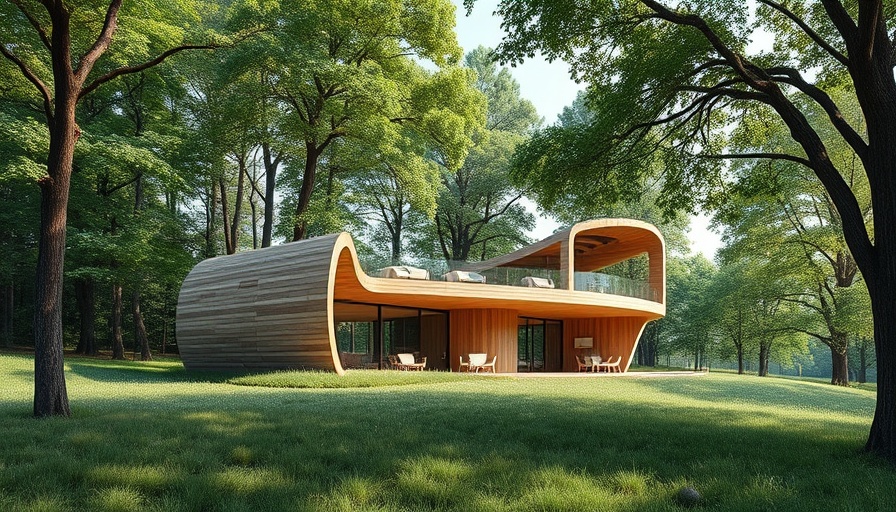
Why Good Design Matters for Workspaces
The importance of a well-designed workspace cannot be overstated. A workspace that integrates natural elements boosts productivity and well-being. Just like the Kew Pumping Station designed by Hugh Broughton Architects, a thoughtful approach that embodies natural forms and materials can bring spaces to life. Imagine working in a space that feels as serene as Kew Gardens, surrounded by nature’s beauty while being functionally effective.
Introducing Plant-Inspired Designs
Taking a cue from nature, the interlocking larch slats of the Kew Pumping Station symbolize the organic forms found in plants, such as palm fronds. This methodology is not just an aesthetic choice; it provides practical benefits. Incorporating plant-inspired designs into remote workspaces can lead to greater engagement and creativity. A workspace that mimics nature encourages mental clarity by reducing stress, promoting a productive environment.
Learning from Nature's Resilience
Kew Gardens' commitment to climate resilience sheds light on another crucial aspect of workspace design—adaptability. Just as the gardens adapt their irrigation strategies to changes in climate, so too can our workspaces adapt to evolving needs and preferences. Ensuring an adaptable workspace allows individuals to remain comfortable and efficient regardless of external conditions. Flexibility, whether through adjustable furniture or spaces that invite collaboration, is key to a successful remote working experience.
Creating Surroundings That Encourage Productivity
Imagine starting your workday surrounded by the calming aesthetics of nature, with inviting materials similar to those used in Kew Pumping Station's larch enclosure. The rich textures and colors derived from natural materials lead to an improved atmosphere. Furthermore, a workspace designed with sustainable materials can increase feelings of joy and contentment, paving the way for higher productivity.
The Role of Nature in Mental Health
Scientific studies show that natural environments significantly improve mental health and well-being. Designing remote workspaces with windows that overlook natural scenery, using plants, or even incorporating elements reminiscent of gardens can have profound effects on our state of mind. Implementing these principles while setting up a workspace can foster an environment that nurtures our mental health and enhances focus.
Finding Balance Between Work and Nature
As demonstrated by Kew Pumping Station’s integration with its wildflower surroundings, finding balance between work and nature is essential. Setting up workspaces that interact harmoniously with natural elements can create a holistic working environment that resonates with the essence of both productivity and tranquility. Digital nomads should consider how they can blend productivity with the vitality of nature in their work setups.
Essential Tips for Ergonomic Remote Workspaces
To optimize remote workspaces, individuals should consider ergonomic best practices. Start with a well-positioned chair and desk to ensure good posture. Integrate environmental factors such as plant placement and lighting to mimic Kew’s vibrant design. Small design adjustments can lead to significant improvements in comfort and efficiency during work hours.
 Add Row
Add Row  Add
Add 




Write A Comment